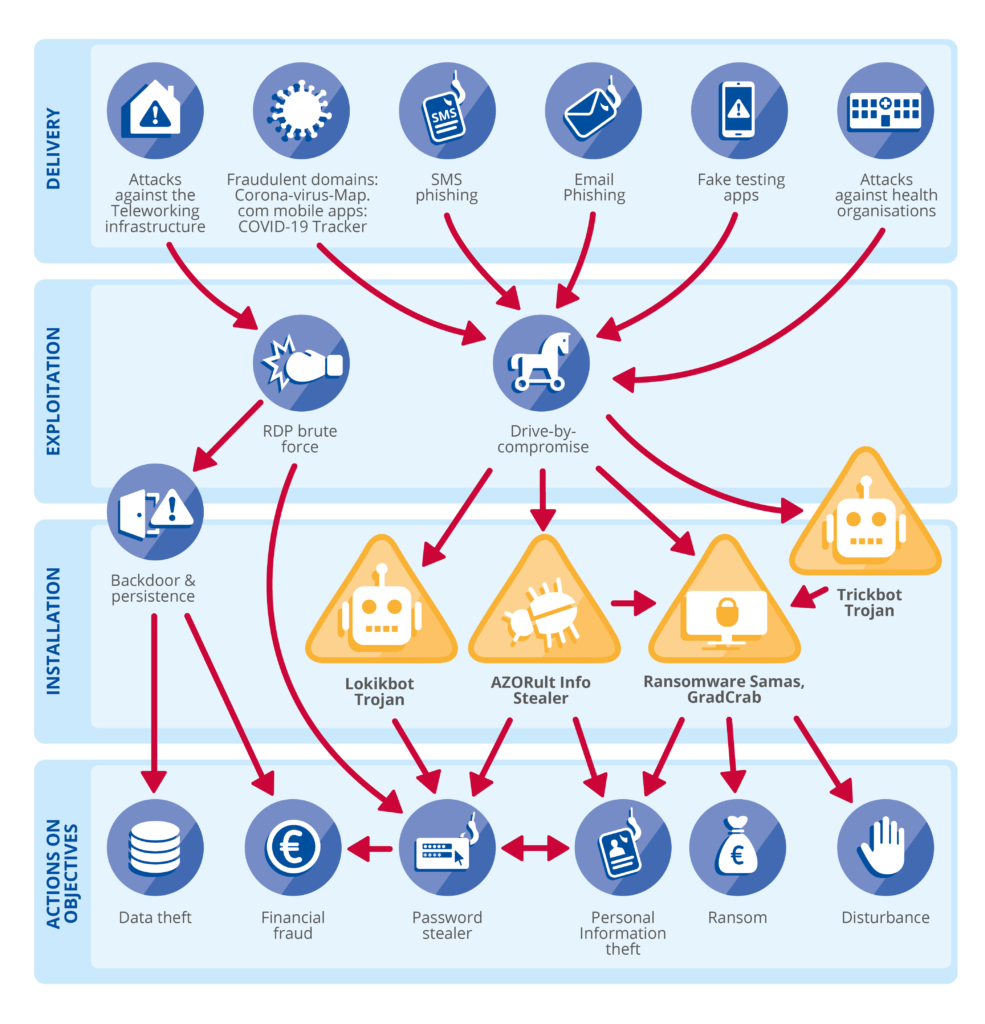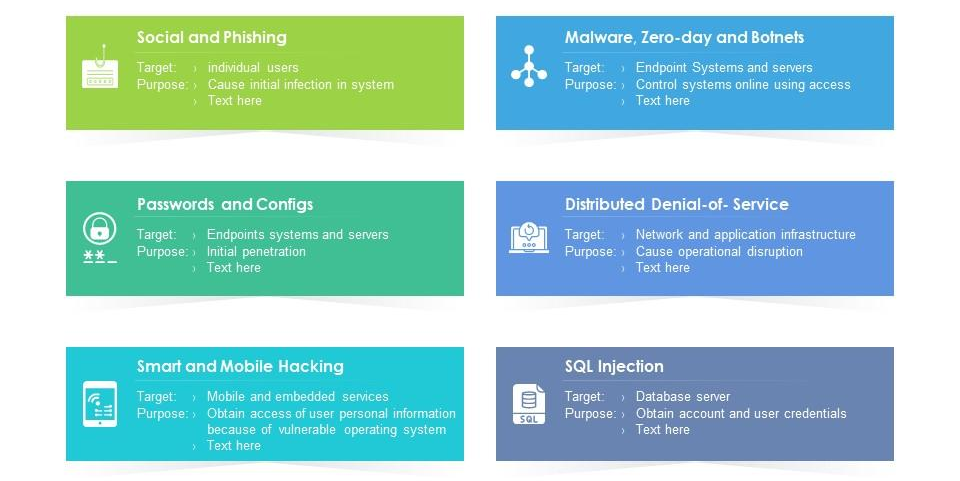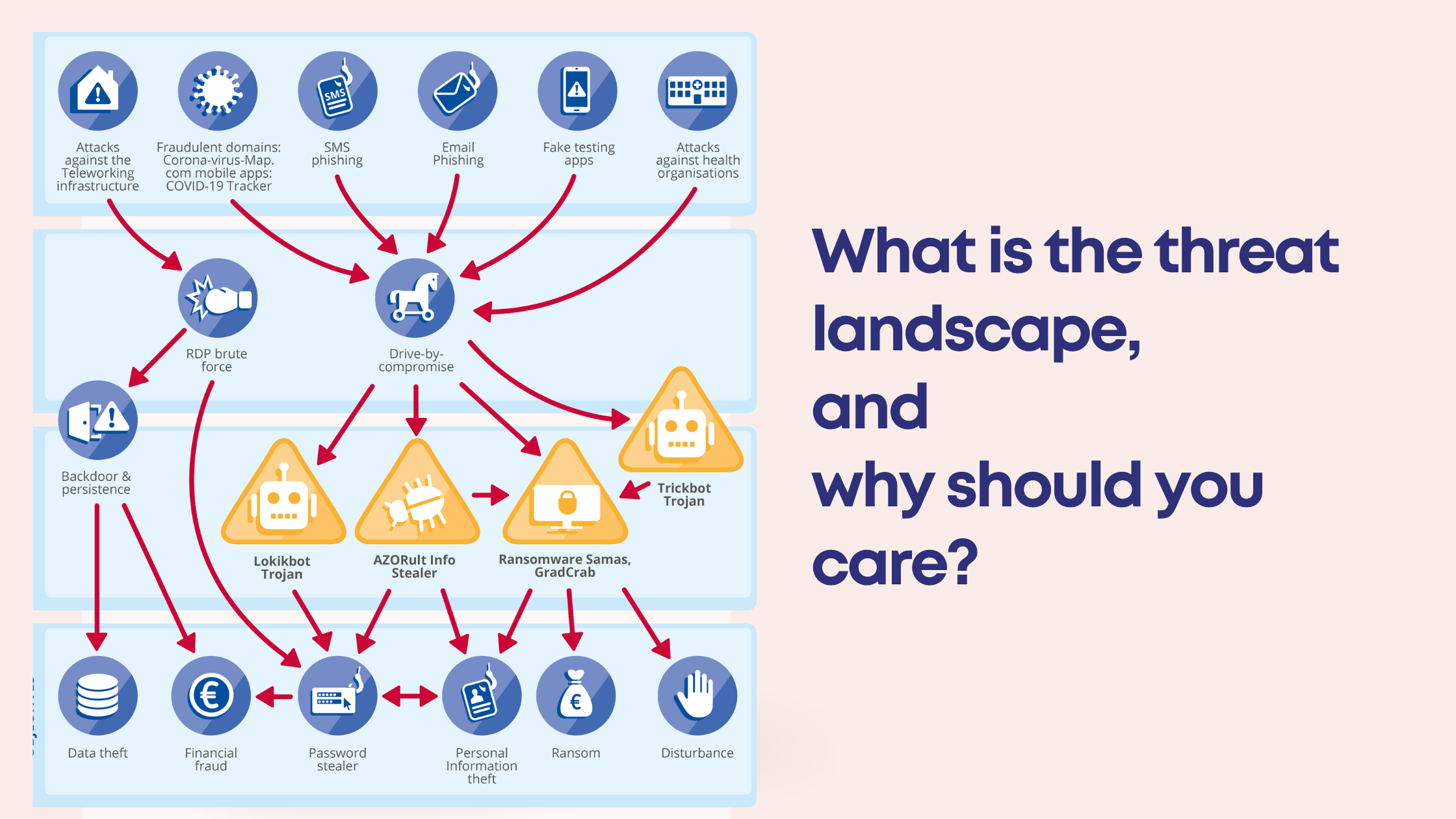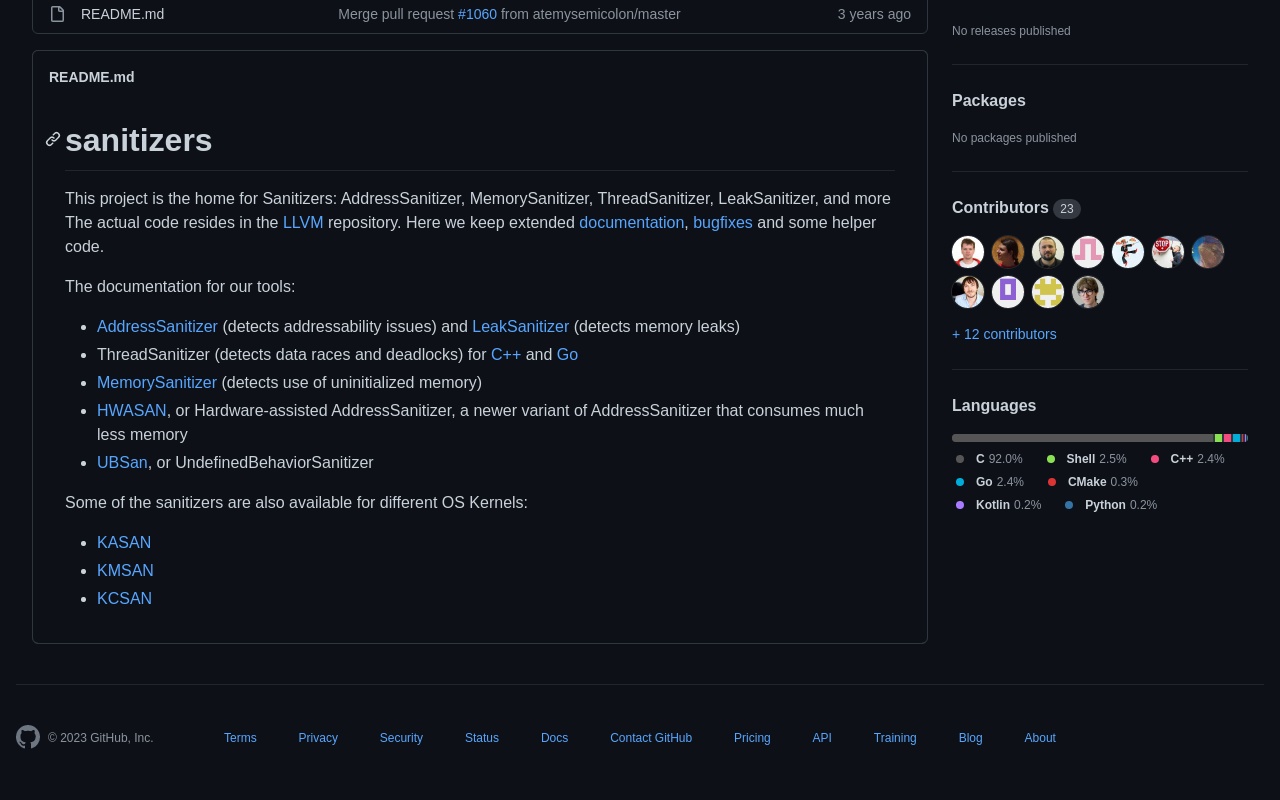The threat landscape is the entirety of potential and identified cyber threats affecting a particular sector, group of users, time period, and so forth. It includes a wide range of threats, such as malware, phishing attacks, ransomware, and social engineering attacks.

The threat landscape is constantly evolving, as attackers develop new methods and exploit new vulnerabilities. This makes it important to be aware of the latest threats and to take steps to protect yourself, regardless of whether you are an individual or an organization.
Cyber Security Threats Landscape with Attacks Target and Purpose:

Why should you care about the threat landscape?
There are many reasons why you should care about the threat landscape. Here are just a few:
- Cyberattacks can have devastating financial consequences. A single cyberattack can cost a business millions of dollars in lost revenue, data breaches, and regulatory fines.
- Cyberattacks can damage your reputation. If your customers’ data is compromised in a cyberattack, it can damage your reputation and trust, and lead to lost business.
- Cyberattacks can disrupt your operations. A cyberattack can take down your systems and networks, preventing you from doing business and serving your customers.
- Cyberattacks can steal your personal information. Cybercriminals can use your personal information to commit identity theft, fraud, and other crimes.
How to protect yourself from cyberattacks
There are several things you can do to protect yourself from cyberattacks, including:
- Use strong passwords and enable two-factor authentication. Strong passwords are at least 12 characters long and include a mix of upper and lowercase letters, numbers, and symbols. Two-factor authentication adds an extra layer of security by requiring you to enter a code from your phone in addition to your password when logging in.
- Be careful about what links you click on. Phishing emails and websites are designed to trick you into clicking on malicious links that can infect your device or steal your personal information. If you are unsure about a link, don’t click on it.
- Keep your software up to date. Software developers regularly release updates to patch security vulnerabilities. By keeping your software up to date, you can help to protect yourself from known vulnerabilities.
- Use a security solution. A comprehensive security solution can help to protect your devices and data from a wide range of cyber threats.
Conclusion:
The threat landscape is constantly evolving, but there are several things you can do to protect yourself from cyberattacks. By following the tips above, you can help to reduce your risk of becoming a victim.
Additional tips:
- Be wary of public Wi-Fi networks. Public Wi-Fi networks are often unsecure, so it is best to avoid using them for sensitive tasks, such as online banking or shopping.
- Back up your data regularly. In the event of a cyberattack, having a backup of your data will help you to recover quickly.
- Educate yourself about the latest cyber threats. There are a number of resources available to help you stay informed about the latest cyber threats and how to protect yourself.
By following these tips, you can help to keep yourself safe from cyberattacks and protect your devices and data.





Leave a Reply